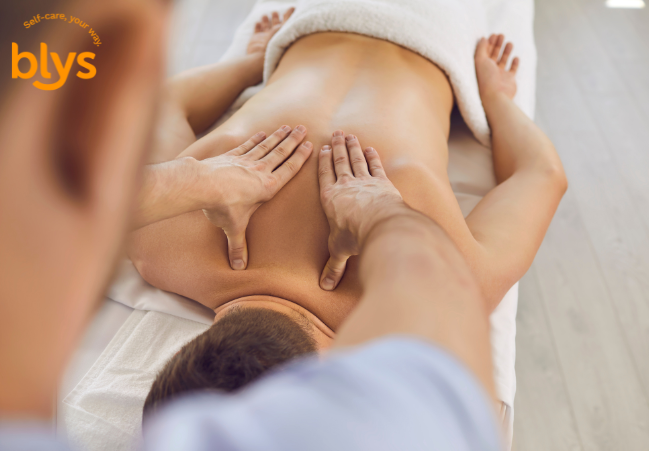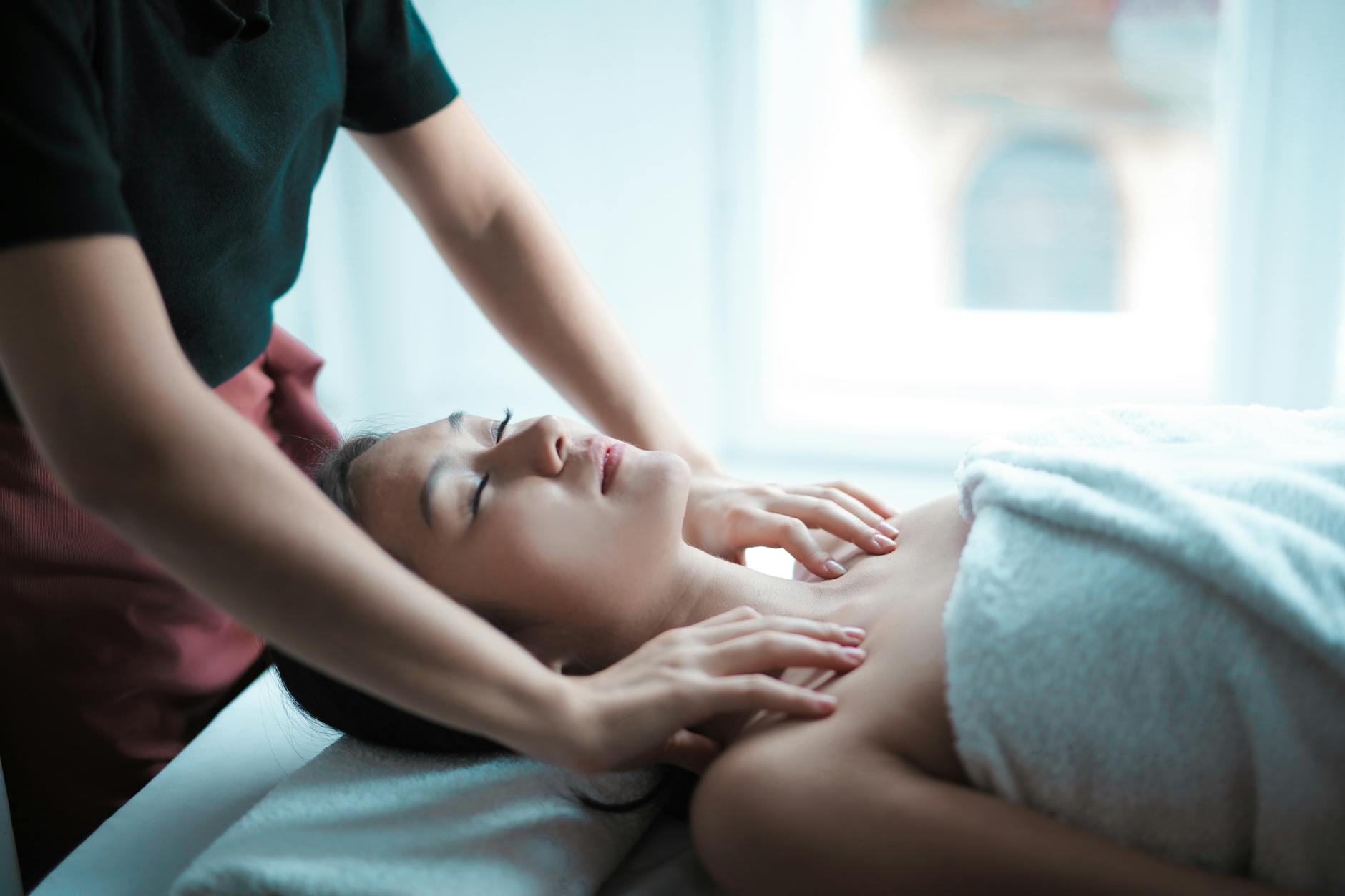
Sports injuries are a frustrating reality for many athletes and active individuals. From muscle strains and ligament sprains to overuse injuries, even minor setbacks can interfere with training routines and overall performance. While rest, ice, and physiotherapy often take the spotlight, remedial massage plays a crucial supporting role in a well-rounded rehabilitation plan.
This hands-on therapy targets the muscles, tendons, and connective tissues affected by injury helping to reduce inflammation, restore mobility, and ease pain. More importantly, it promotes blood flow and lymphatic drainage, which are key to faster healing. For athletes, this means getting back to their sport not just quicker, but stronger and more resilient.
Whether you’re training for your next event or simply love staying active, incorporating remedial massage into your recovery process can make a significant difference in how your body bounces back after injury.
Why Massage Matters in Sports Injury Rehab
When an athlete gets injured whether it’s a pulled muscle, sprained ankle, or joint inflammation the body reacts in ways that can limit mobility and delay recovery. Inflammation builds up around the injured area, circulation slows down, and the surrounding muscles may tighten to protect the site. If not addressed early, these responses can contribute to stiffness, scar tissue, and prolonged pain.
What happens during a sports injury:
- Inflammation and swelling: These are the body’s first responses to injury but can compress nearby tissues, restricting blood flow and healing.
Muscle tightness and reduced range of motion: Protective tension around the injured area can limit flexibility and lead to imbalances in movement.
Where remedial massage fits in:
- Complements rest and physiotherapy: Massage can maintain circulation and flexibility while you’re recovering, reducing stiffness without putting pressure on the injury.
- Targets secondary issues: It addresses compensating muscles that may become strained due to altered posture or gait from the primary injury.
Unlike rest alone, remedial massage actively supports the recovery process by improving tissue repair, reducing pain, and preparing the body for safe return to activity.
Learn more about how our mobile therapists can help by visiting the Remedial Massage Service page.
What Is Sports Injury Rehabilitation Massage?
Sports injury rehabilitation massage is a focused form of remedial therapy designed to support your recovery after an injury. It specifically targets damaged or overworked muscles, tendons, and soft tissue helping reduce pain, improve mobility, and speed up the healing process. Whether you’re dealing with a strained hamstring, a sprained ankle, or tendon pain from overuse, this approach is tailored to help your body repair itself efficiently and safely.
Here’s how it differs from other types of massage:
- It’s built for recovery, not relaxation: Unlike general relaxation massage, which focuses on calming the nervous system and relieving stress, rehab massage has a clear clinical goal: to support healing, restore function, and reduce pain linked to injury.
- It goes beyond standard sports massage: While sports massage is great for warming up before an event or reducing post-exercise soreness, rehabilitation massage is more precise. It concentrates on injured tissues and compensating areas that may have tightened or weakened.
- Pressure and technique are carefully adjusted: Therapists start with lighter techniques during early recovery, increasing intensity only as the body can tolerate it. This ensures you get the benefits without aggravating the injury.
- It prevents further issues down the track: By improving flexibility and breaking down scar tissue, rehab massage can reduce the risk of long-term imbalances or re-injury.
This form of massage plays an active role in helping athletes and active individuals regain strength, mobility, and confidence after injury. It’s a personalised, hands-on approach that evolves with your recovery stage ensuring you heal the right way.
Techniques Used in Remedial Massage for Athletes
Remedial massage for athletes includes a range of hands-on techniques that are applied strategically to promote healing, relieve pain, and restore movement. These methods aren’t used randomly they’re chosen based on clinical assessment, injury type, and recovery stage.
Each technique serves a specific purpose, from reducing inflammation and breaking down scar tissue to improving muscle elasticity and joint mobility. Experienced therapists often combine multiple techniques within a session to address not only the injury site but also the surrounding tissues that may be compensating.
Backed by both clinical experience and growing research, these techniques form a personalised and results-driven approach to rehabilitation.
Here’s a closer look:
- Trigger Point Therapy: Trigger points are tight knots in muscle fibres that can refer pain elsewhere. Direct pressure helps release these knots and restore function. A systematic review supports manual trigger point therapy for reducing pain and improving function in people with myofascial pain syndrome.
- Myofascial Release: This approach uses sustained pressure to loosen restricted fascia (the connective tissue surrounding muscles). While high-quality studies are limited, professional guidances such as those summarised by PhysioPedia mention myofascial release as a common adjunctive technique.
- Cross‑fibre Friction: Applied perpendicular to muscle fibres, this massage method helps break down adhesions and align healing tissue properly. Physiopedia identifies deep transverse friction as useful in aligning collagen during tissue repair.
- PNF Stretching (Proprioceptive Neuromuscular Facilitation): PNF combines passive stretching with isometric muscle contractions to enhance flexibility and neural control. Evidence shows it’s at least as effective as static stretching in improving range of motion for athletes.
Common Sports Injuries Treated with Remedial Massage
Remedial massage is often used to assist in recovery from a wide range of sports-related injuries. It’s not a one-size-fits-all solution each injury responds differently depending on its severity, the stage of healing, and the individual’s activity level. Below is a quick guide to some of the most common sports injuries where remedial massage can play a supportive role:
| Injury | How Massage Helps |
| Hamstring strain | Boosts blood circulation to the muscle, helping reduce inflammation and encourage faster healing. It also helps break down scar tissue to improve flexibility. |
| Ankle sprain | Helps reduce residual swelling and stiffness after the acute phase. Massage promotes drainage of excess fluid and supports better mobility in the joint. |
| Tennis elbow | Releases tension in the forearm muscles, improving grip strength and reducing pain linked to overuse or repetitive motion. |
| Rotator cuff issues | Improves joint mobility by releasing surrounding muscle tightness and reducing shoulder stiffness, often caused by poor posture or repetitive lifting. |
While massage offers significant benefits in the recovery process, it’s important to note that it should not be applied directly to an injury during the acute phase usually the first 48–72 hours when inflammation, swelling, or bruising is still active. In these early stages, rest, ice, and elevation are more appropriate.
As always, it’s best to consult with a qualified therapist who can assess whether massage is suitable for your injury stage and create a personalised treatment plan.
If you’re also dealing with long-term discomfort from past injuries or overuse, you might find this helpful too read our blog on remedial massage for chronic pain to learn how targeted therapy can provide lasting relief.
Real Benefits for Athletic Recovery & Performance
For athletes and active individuals, performance gains don’t happen in the gym alone they’re built through consistent recovery. Remedial massage is one of the most valuable tools for ensuring the body heals properly, adapts well, and stays injury-free over the long term. Beyond easing sore muscles, this type of massage offers a wide range of physical and mental benefits that support the demands of sport.
Faster healing time
Soft tissue injuries from strains to microtears heal more efficiently when circulation is optimised. Remedial massage enhances blood flow to injured areas, increasing the delivery of oxygen and nutrients vital for cell repair. It also stimulates lymphatic drainage, helping clear away toxins and reduce excess swelling. According to a study in the Journal of Athletic Training, massage accelerates muscle repair and supports the recovery of strength and function after high-intensity exercise.
Reduced risk of re-injury
After an injury, the body often compensates with altered movement patterns, leading to muscle imbalances and added strain on other areas. Remedial massage identifies and treats these secondary issues restoring symmetry, flexibility, and joint stability. This helps prevent recurring injuries, particularly in high-risk areas like hamstrings, lower back, and shoulders.
Less pain and inflammation
Massage activates the body’s parasympathetic nervous system, which counteracts pain signals and promotes deep relaxation. It also reduces the release of inflammatory chemicals like cytokines, easing muscle tightness and pain. A study published in Science Translational Medicine shows that massage can reduce inflammatory markers and even promote mitochondrial biogenesis in healing muscles.
Improved mental focus and sleep
Mental recovery is just as important as physical repair. Massage helps regulate stress hormones like cortisol and encourages the production of serotonin and dopamine neurochemicals that support mood, focus, and deep sleep. Research highlights its role in improving psychological recovery from training, allowing athletes to rest well and stay mentally sharp.
From reducing downtime to optimising recovery, remedial massage plays an essential role in helping athletes perform at their best.
Of course, the key is finding the right therapist who understands your body, your sport, and your recovery goals.
Want to understand those stubborn muscle knots? Learn more about trigger points and remedial massage.
How to Get Started with Remedial Massage Near You
Starting your recovery with remedial massage is a step in the right direction but to make it truly effective, choosing the right therapist and setting is essential. Sports-related injuries require more than just general massage skills. A tailored, evidence-informed approach is what makes the difference between a good massage and a strategic recovery session.
What to look for in a qualified mobile massage therapist
When booking a therapist for injury rehabilitation, credentials matter. A properly trained therapist can assess your condition and apply techniques based on the stage of your healing.
Here’s what to look for:
- Accredited qualifications in remedial massage: with training in anatomy, physiology, and soft tissue injury management
- Clinical experience in sports recovery: particularly with conditions like sprains, strains, overuse injuries, or restricted mobility
- Assessment capabilities: such as testing your range of motion and identifying compensatory patterns in movement
- Clear communication and progress tracking: so you understand how each session supports your overall rehab plan
- Adjustability: with the ability to vary pressure, techniques, and focus areas to match your injury and tolerance level
Why book with Blys?
Blys takes the stress out of finding a trusted massage therapist by curating a network of experienced professionals. You can rest easy knowing:
- All therapists are certified and insured: ensuring your safety and care quality
- Each therapist is carefully vetted: with background checks and ongoing reviews
- It’s fully mobile: meaning your therapist comes to you with everything needed massage table, towels, oils, and more
- Booking is fast and flexible: with same-day options and the ability to choose a time and location that works for you
Mobile sessions vs clinic sessions
For athletes or anyone recovering from injury, mobile massage offers a more comfortable, stress-free alternative to clinic visits. You avoid commuting, which reduces physical strain and allows you to rest immediately after treatment.
The familiar environment of your home also encourages deeper relaxation, and with fewer scheduling constraints, you’re more likely to commit to regular sessions leading to better long-term outcomes.
Support for the Long Run With Blys
Remedial massage is more than just a tool for short-term recovery it’s a powerful part of long-term athletic wellness. Whether you’re bouncing back from a specific injury or simply trying to stay on top of your game, targeted massage therapy helps your body heal smarter, move better, and perform with confidence.
By supporting tissue repair, reducing muscle imbalances, and promoting faster recovery, remedial massage plays a vital role in both rehabilitation and performance enhancement. It complements other forms of care like physiotherapy and strength training, making it a smart choice for any athlete’s recovery plan.
But its benefits go beyond injury. Regular massage helps manage everyday aches, improves posture and joint mobility, and even supports better sleep and mental clarity all crucial for staying active and avoiding setbacks.
If you haven’t tried a session yet, consider it a reset for your body. Whether you’re in the middle of a rehab plan or just coming off a heavy training week, one session can show you how much difference it makes.
Ready to make recovery easier? Book your first mobile remedial massage session with Blys today.





